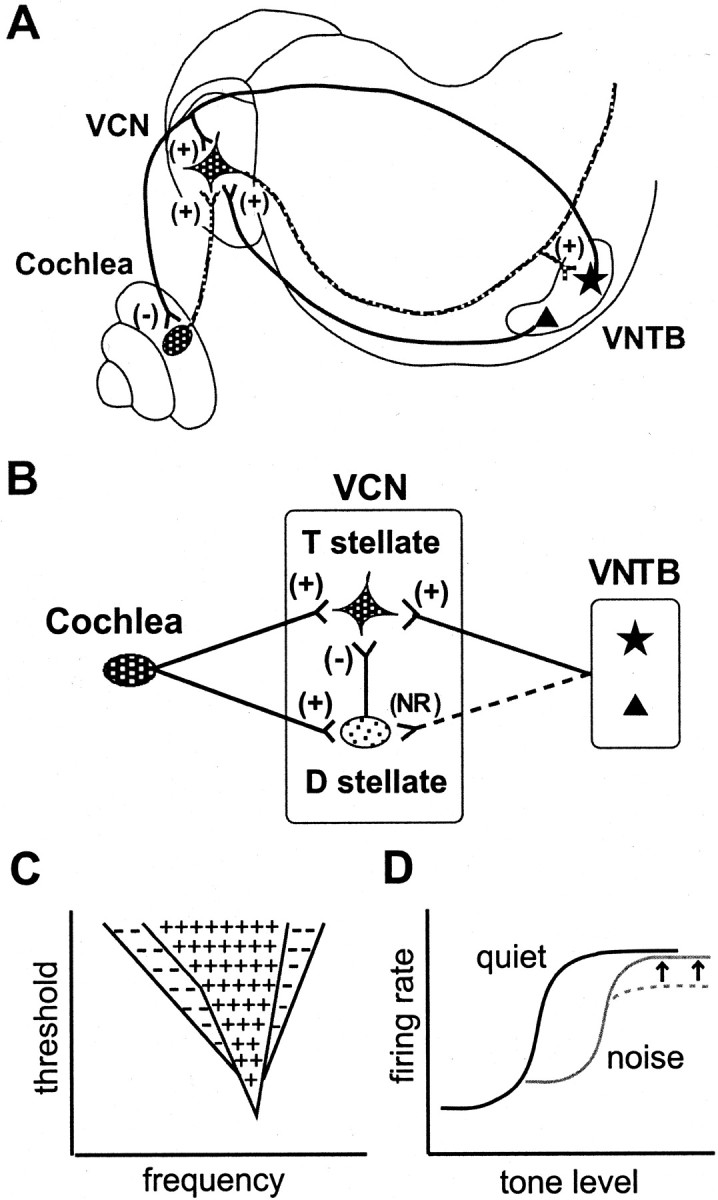Fig. 11.

Schematic representations of neuronal circuits that involve cholinergic innervation of the VCN and their implications.A, Representation of the feedback loop to the cochlea and to the VCN through two types of cholinergic neurons of the VNTB. The medial olivocochlear efferent neuron (filled star) innervates both the VCN and the outer hair cells of the cochlea. Acoustic information from inner hair cells is carried to the VCN through spiral ganglion cells (shaded oval) whose axons are the auditory nerve. Smaller cholinergic neurons of the VNTB (filled triangle) innervate only the VCN. T stellate cells are indicated by the scalloped quadrangle. +, Excitatory connections; −, inhibitory.B, VNTB neurons of both types excite T stellate cells but not D stellate cells (large oval). D stellate cells inhibit T stellate cells. Spiral ganglion cells innervate both T and D stellate cells. NR, No response. C, Schematic representation of the responses of T and D stellate cells to tones as a function of frequency and intensity. D stellate cells are excited through auditory nerve fibers by tones that fall into a V-shaped range of frequencies and intensities. The frequency at which the threshold is reached at the lowest intensity is the best frequency for the cell. At higher intensities, cells are activated over a broader range of frequencies that is schematically outlined by theline that encloses both + and − symbols. T stellate cells are activated through fewer auditory nerve fibers by tones over a narrower range of frequencies, indicated by theline that encloses the + symbols. The inhibition of T stellate cells by D stellate cells confers inhibitory side bands to the frequency range over which T stellate cells respond. Except where excitatory responses are near the threshold, excitation of T stellate cells overcomes inhibition (based on Rhode and Greenberg; 1994).D, Proposed mechanism of signal enhancement in noise in T stellate cells at the best frequency. In noise, cholinergic efferent suppression from the cochlea shifts and compresses the dynamic range of responses of auditory nerve fibers (dashed line). The present results indicate that cholinergic efferents enhance signals in T stellate cells (gray line, arrows), opposing cochlear compression (based on May and Sachs, 1992).
